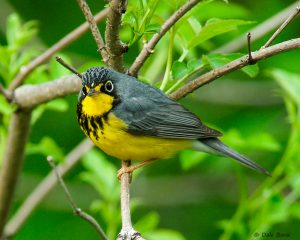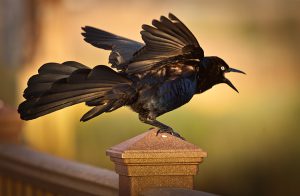
Environment
The sixth extinction
The planet is in the midst of drastic biodiversity loss that some experts think may be the next great species die-off. How did we get here and what can be done about it?
- 4895 words
- 20 minutes
This article is over 5 years old and may contain outdated information.
Wildlife

A sobering report on the state of the world’s birds has found that one in eight bird species are at risk of extinction. The five-year global study, released earlier this week by BirdLife International, analyzed data from the IUCN Red List and shows that of the total number of species analyzed, at least 40 per cent are in decline. A number of species of cranes (73 per cent), vultures (68 per cent), albatrosses (68 per cent) and parrots (29 per cent) are at particularly high risk of extinction.
“Sadly, the ongoing deterioration of the state of birds globally is all too predictable. However, what is shocking is that many familiar—and until recently widespread and abundant—species are now at risk of extinction,” says Tris Allinson, senior global science officer for BirdLife International.
Two birds that will be very familiar to Canadians, the Atlantic puffin and the snowy owl, are listed as vulnerable to extinction due to food scarcity and climate change. Although risk factors vary across regions, the most common threats to birds worldwide include agriculture expansion, logging, invasive species and climate change.
According to the report, 74 per cent of the 1,469 threatened bird species are impacted by farming. Deforestation and wetland draining often precede the creation of farmland, thus destroying critical breeding habitat for many species. In the Canadian prairies, the conversion of wild grasslands to cropland has disturbed the nesting grounds of small birds like the chestnut-collared longspur and the Sprague’s pipit. Their populations are now at risk.
Agriculture isn’t the only driving force behind bird decline. Worldwide, hundreds of bird species are vulnerable to predation by species found outside their natural habitat. Birds on small, isolated islands are especially at risk. For example, in B.C.’s Haida Gwaii archipelago, introduced predators such as rats and raccoons will devour chicks and steal eggs from the nests of seabirds.
The impacts of climate change are beginning to be seen in the migration patterns and breeding cycles of shorebirds like the red knot. Fluctuations in temperature have caused this endangered bird to fly further distances. Knots travel from the Arctic all the way to the tip of South America, where they find that horseshoe crabs, one of their main sources of food, are overharvested for fish bait and fertilizer.
“It is vital that we recognize what birds already know: that is, birds live in many different places and need the nations of the world to cooperate if they are going to survive,” says Bird Studies Canada president Steven Price.
Bird Studies Canada maintains a network of more than 48,000 volunteer scientists, many of whom helped to track the movements of red knots in South America. International cooperation to monitor birds and set aside habitat for their needs has made a notable difference in the lives of some species. The State of the World’s Birds report indicates that 25 species of birds have actually been brought back from the brink of extinction thanks to conservation efforts.
Still, as the report puts it, birds are “taking the pulse of the planet.” Trouble in their world is an early warning signal to us all.
“All of us actually depend on the species and habitat surviving for our economy, social welfare, and for our and health and safety,” says Price.
Are you passionate about Canadian geography?
You can support Canadian Geographic in 3 ways:

Environment
The planet is in the midst of drastic biodiversity loss that some experts think may be the next great species die-off. How did we get here and what can be done about it?

Environment
As the impacts of global warming become increasingly evident, the connections to biodiversity loss are hard to ignore. Can this fall’s two key international climate conferences point us to a nature-positive future?

Environment
Indigenous conservationists are listening in to track the impacts of climate change on the boreal forest

Travel
Spread your wings with birdwatching’s elite guard in south Texas